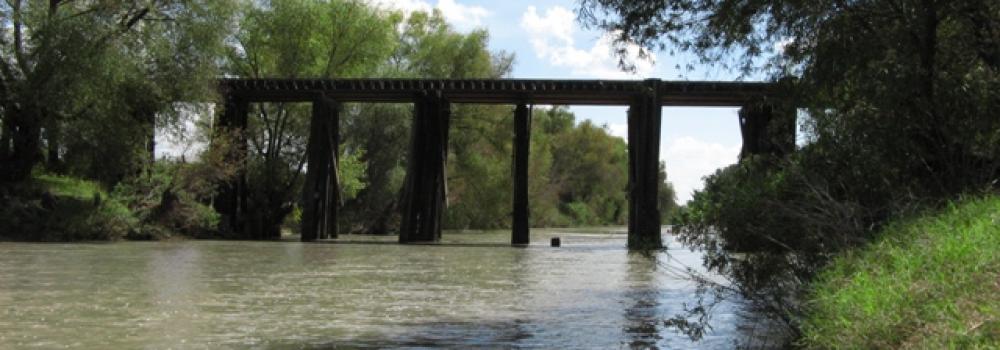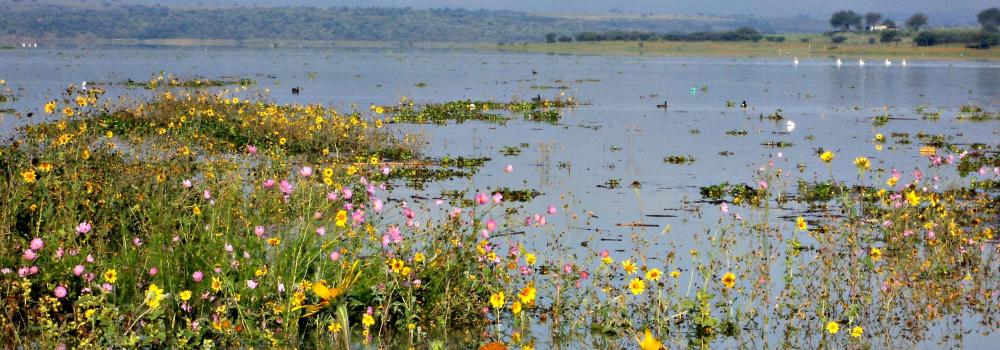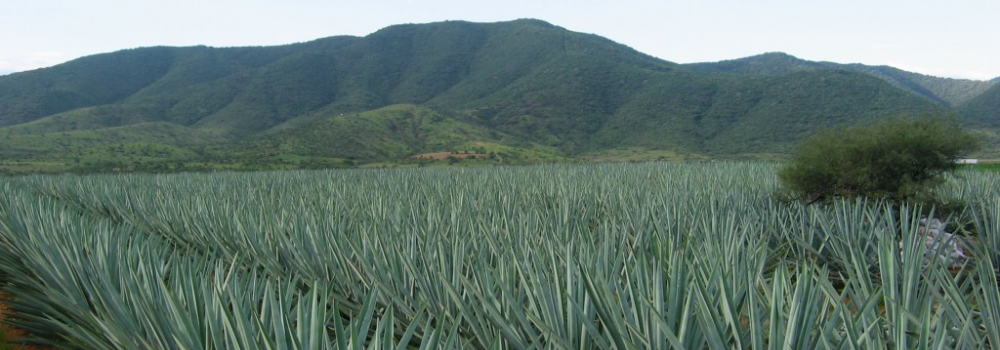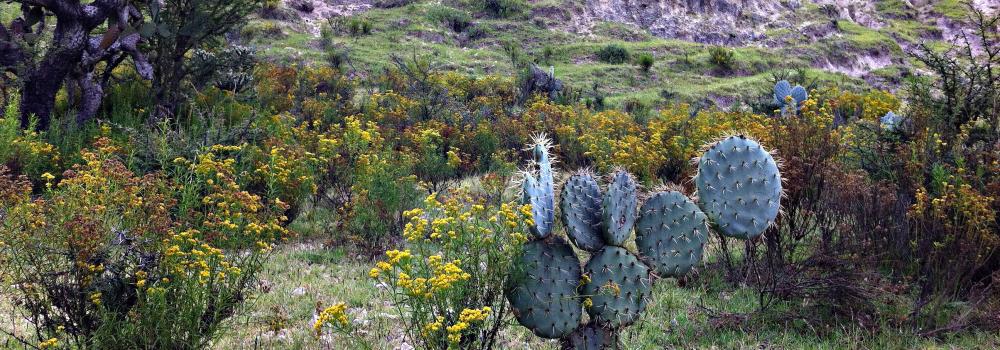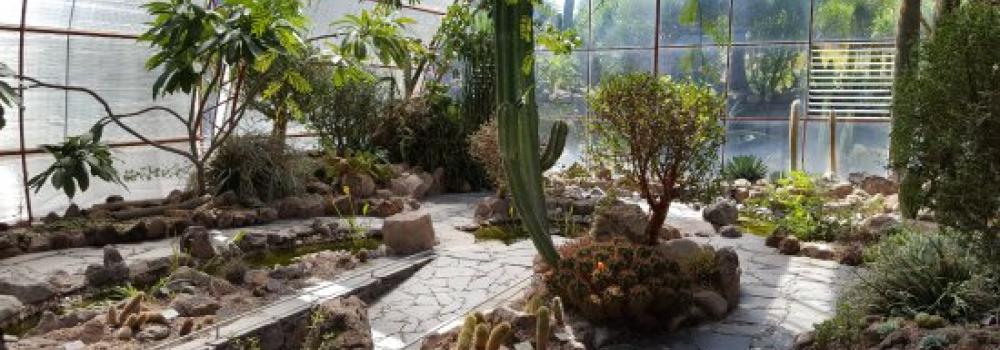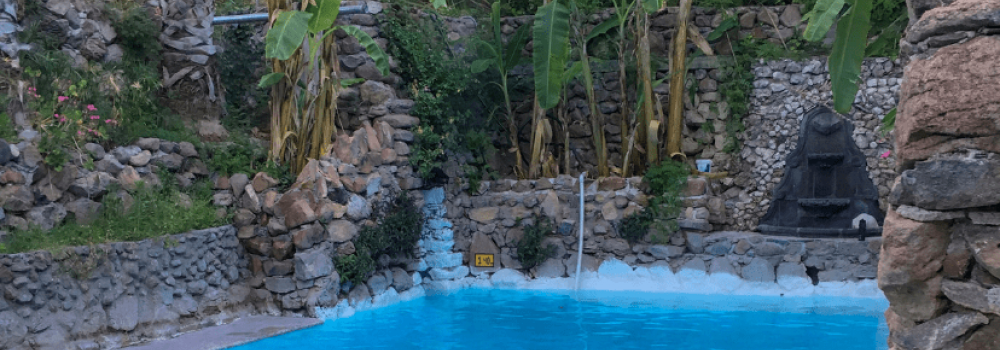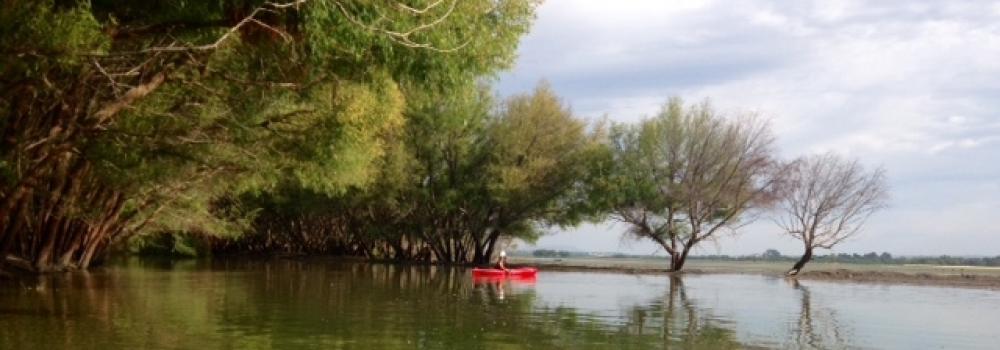Much has been said in these dialogues about the cost of extraction, treatment and distribution of water in San Miguel, as carried out by SAPASMA. It has been proposed that the cost should be directly proportional to the consumption, among other important points concerning the distribution of water.
At the table for the discussion of cost and distribution of water we have Engineer Eduardo Adrian López Sánchez from SAPASMA, Director of Commercialization including attention to clients, contracts and user registration system. Part of his function is to bring together and prepare statistical reports with the information generated by the different departments, as well as to analyze billing information Also from SAPASMA Carlos Ricardo Olvera Ávila. He graduated in Sciences and Communication from the University of LaSalle Bajío. In 2009-12 he was in charge of events for the Department of Economic and International Relations in SMA and is now head of Institutional Management of the Rural Support Directorate of SAPASMA.
We also have with us Enrique Orvañanos Acosta, a systems engineer working in the creation and development of businesses in the private sector in Mexico. He has a Master’s in Business Management from IPADE. He was president of the Midday Rotary Club which has implemented various social programs including collection of rainwater at the family level in poor communities of San Miguel. His professional interest is to use existing resources in the creation of new business products, services, methods, processes, approaches and business models.
We also have with us Mario Hernandez Peña who has his B.A. in Sociology and Master’s in Integrated Watershed Management. Mario has worked for private business initiatives as well as the state government of Guanajuato and non- profit agencies. He is currently Director of El Charco/ Botanical Garden and serves as well as the President of OCAS, the Citizens’ Observatory for Water and Sanitation. This afternoon Mauricio Sánchez Osornio will be the moderator. He represents the Regional Center for Water Conservation ¨Las Yerbas¨(CEDECALY). He’s also the President of the Network of Communications in Water Culture of the northeast of the State of Guanajuato and the Technical Since 2005 he’s been working actively in FAI, The Foundation of Youth Assistance of Guanajuato where he teaches about water conservation in Dolores Hidalgo and San Diego de la Union working closely with communities and schools. He teaches about water culture and conservation and other environmental issues, using the WET guide and other materials .
Ing. López Sánchez: We know that there’s a water deficit at the state level. Most of the water- 98% – extracted in the state is extracted from the aquifers, only 2% is used is from surface water. Furthermore, there are losses between what is extracted and what arrives at the homes. For every 100 liters, only 42 liters reach the homes. Much of this water is lost and that´s precisely what we need to be able to distribute to the areas that aren´t presently getting it. So we need to improve efficiency, so that more of the water arrives in the municipality. This requires maintenance and infrastructure work to ensure that the water reaches homes.
We have to improve the infrastructure to make the service more efficient and to care for the water that we´re paying for. This has a high cost and we need greater resources for maintaining the infrastructure. Often we don´t pay attention to the meters in our houses where we do have measured the consumption to know if we´re making good use of our water service. I think the people need to be aware of their own consumption, not just the operators.
Now we have a program for updating the meters every 5 years. This can give us a lot of information and we can be sure that the meter is recording the real consumption. This allows us to set a more just price as well as to detect leaks; it serves to give us a real contract for a well-monitored service at a fair price so that we can maintain the infrastructure and take into account the cost of extracting the water and transporting it to the homes. This renovation of the meters is going to be very important on the municipal level as well as in rural areas.
Another part I want to talk about is current fee structure. We have fees based on the rate of consumption. Until the year 2000 there was a rate for 1-20 cubic meters with a fixed price regardless That system wasn’t very fair. Suppose I didn’t use any water for some reason, I would pay the same as someone who used 20 cubic meters. So the scheme was changed and today the base permits us to maintain operations. Then from 0 cubic meters, there’s a price differential that increases according to the usage. Someone who doesn’t consume water pays only the maintenance base price.
This also allows us to see who consumes at a much higher level and to charge a higher rate. This structure has been in place since 2009.
People think that laying and maintenance of pipes, administrative costs and maintenance of our own building are the most expensive parts of our service. No, that’s not true. The really big cost is the extraction of water from underground and the use of electricity. When someone complains that they hardly use any water and they still have to pay SAPASMA, we have to explain that the simple cost of getting the service to their house is expensive. The base fee is what we all share to have this necessary As of 2010, at the state level we pay 8.16 pesos per cubic meter for 5,000 liters. That’s a relatively low cost in comparison to other services. We need to give value to the liquid, to water, but we’re so used to just going and opening the tap to get water that we don’t really value the water. We don’t think about what it takes to provide it. But there are still people who don’t have water and have to wait for a truck to bring them water. We’re offering a service to bring water to the homes of the maximum number of people at an accessible price. But we tend not to really value it till we don’t have it.
Lic. Olvera Ávila: I’m in charge of the management and rural support for SAPASMA for all the communities of San Miguel de Allende. SAPASMA operates primarily in the city and reads the meters and studies payments to determine the water consumption of the population. In the communities, it functions differently.
When a new water resource (such as well) is created, our function is to form a Potable Water Committee which is charged with the operation of the water system in that locale. This applies in communities where there is a well and storage for water.
We support them administratively to determine fees related to electrical consumption, maintenance and payment to the person operating the well. We only advise the assembly or the beneficiaries. Also, we help design the rules to establish a tariff of 80 pesos per family or per tap per month. In the communities, it’s per tap. When we propose a structure of regulations, the representatives of the community review and accept those with which they agree and propose alternatives for those with There are quotas and penalties. I want to emphasize that it is in the communities where we find the most consciousness about the value of water as they’ve lived without it. Thus they have significant penalties for those who waste water.
The average water container in the communities is 25-30 cubic meters and they can’t always fill them constantly—once or twice a week, depending on the rules established by the committee. We suggest in some cases that they put in meters, but in principle it’s the rates that determine the usage. It’s prohibited to use this community water for other than domestic use. In areas where water is not needed for human use, we permit other uses as agreed by the community, but not agricultural.
At this time we serve 250 communities. We’re in constant touch with the department of water culture and social communication [of SAPASMA]. They help us with the general consciousness-raising. We also coordinate with the department of chlorination to make sure those levels are healthy.
Water in the communities is now found at a depth of 300 meters. This creates more consciousness in the communities. In the months of April and May, when cows and sheep require more water, quotas are established according to the number of head of livestock.
There are 5 persons in our department for 545 communities and all have different functions we organize the collection of accounts. The communities inform us of income and expenses accounting for every peso. If there is a discrepancy, we issue an official notice. The community, represented by its delegate determines if they will go to court. We can give legal advice, but we are not authorized to intervene directly. If there are many users behind in payments, we issue a request to pay their accounts, but it’s the water committee that finds a solution. The assemblies elect their representative
Enrique Orvañanos: The issue of the price of water is very relative. We can see it as a service of SAPASMA or as what we pay for bottled water for home use. The difference in these two prices is enormous. Water is very expensive when we don’t have it, and that’s the point I’d like to focus on.
If we want to solve the problem we have, we must focus on a given time and space, in this case, San Miguel de Allende in September 2013. And the question is: can we provide water for domestic use to all of San Miguel? It’s a fundamental question and we must first see how many families don’t have water and how we can provide for them when they are dispersed in rural zones. How much does it cost and in what time frame can it be done?
It’s a complex question if we consider rural and suburban areas. But we must resolve it. It’s not possible that we continue to have people without water.
As has been said, there are more than 500 communities. 250 are organized. Cities like san miguel have an infrastructure, but there are around 2,000 families in suburban zones that are lacking infrastructure.
In the rural zones, there are families that have no water and must go searching in rivers 30 minutes from home. Eventually they receive water from the municipality in trucks or in tambos (drums) of 200 liters or in buckets…..and from the point of view of quality of life, this is very sad.
The good news is that the majority who reside in San Miguel have piped water. We’re speaking of 26,000 [needed] connections and possible 5-6,000 families that do not have water which is a situation relatively easy to resolve. But we must also recognize that the cost to people who buy from the water trucks is 6-10 times more than the average cost in San Miguel. This is too much difference for something that is not negotiable.
The fact is, we cannot take pipes to all the families that are in the most extreme reaches the municipio where there are no roads. It’s not doable. In the furthest ranches it is preferable to catch rainwater than to use water from the aquifer.
SAPASMA’s rate has improved; it is more equitable now than before. The fixed base rate is 52 pesos a month—not a huge amount. However, there are those who consume less than 5 cubic meters per month and so pay more per cubic meter. This concerns me as people who use less pay more than those who consume 20 cubic meters. That is, of all of us in the SAPASMA system, 26,000 users, around 7,000 pay more per cubic meter and use less. And there are 5,000 families between the suburban zone and the rural zone that do not have this service at all.
We need to resolve this problem and we have thought it is possible by catching rain water. In our region, the average rainfall is about a half meter, 60 centimeters a year. If we store this water, it would last us, but instead we are losing it. We must learn to capture it, at least at the domestic level. And this would also minimize the additional consumption of water extracted by drilling of well.
It seems to me important in the rural zones where wells are shared to have an orderly management. It’s a shame that it costs so much to extract it and it’s only getting more expensive as the depth gets Transporting water by pipes is the most economical way. But when there are no pipes, water trucks are the other way to transport water. What we suggest is that we choose 6 wells in various areas and have a truck deliver from each of these to the surrounding communities rather than having all the trucks coming from 1 central well. This would use less gas and deliver more per day. The investment The project of [Rotary and CEDESA] of communities building cisterns for rainwater is already proven, functioning and replicable. For several years I have had the opportunity to work with the Rotary Club in which we initiated these rainwater cisterns with the help of the Department of Ecología of the municipality. This was in the last two administrations and we hope to continue this work with the present administration as well. This is a common objective of society and the government.
How much does this project cost? How much are we Sanmiguelenses spending on bottled water per family? How many garrafones (the big water bottles) are used each week? We spend double for garrafones what we pay to SAPASMA per month. Probably the water we receive from the city today is equal in quality to what we drank in our homes as children and we haven’t noticed the additional cost because we are bombarded with advertising about commercial water.
If we add up the cost of what we pay for electricity and gas and compare that to what we pay for water, it’s laughable. Some pay 80-90 pesos a month. The average is 150 and those who pay more for water, even then it’s up to 1000 pesos or just a little more. So, if we raised the cost of water just a small percentage to solve this problem it would not have a greater impact.
Those who use more could pay 10 or 20% more and that could provide for projects to resolve the problem for those who have no water.
We also need to facilitate rainwater capture in the ranches and small communities. The current project provides them the materials and the training in how to construct their cisterns and makes an agreement with the community that they work together in the construction of a cistern for each house. In this way we have already done 650, almost 700, which are now catching rainwater.
When the cistern is emptied, it can be filled by a water truck. They will have 24 cubic meters annually, 2 per month. We’re talking about the people who consume the least water. And this is where we Also, we need to modify the law on income so that the price of water can be modified to what it is worth. Another action that we could take is to express solidarity with those who don’t have water and create a voluntary fund in a type of self-taxing. If we put 20% of what we are paying today for water in a fund for valid, concrete and well-supervised projects we could make this a reality. This is already happening in the Green Fund of Ecología and SAPASMA; what we need is to do it more rapidly and This 20% that we propose as a voluntary contribution could also be a voluntary quota for saving monthly on our water use. And for these zones where they don’t have pipes, we suggest the building of dry toilets so as not to contaminate their area.
Mario Hernández: All these suggestions are perfectly feasible and we invite you to continue supporting these dialogues to Water poverty and water justice are the central theme that I’d like to talk about to create a pathway for action. I think that in particular we have urban poverty in respect to water. Historically, there was abundance. Thirty years ago there were plentiful springs in this region. However today, though there are still great quantities of water as we see in our surroundings, there’s inequality and differences between the supply and demand. There is water that we can extract, but where should it be directed and why does it go some places and not others?
Also, it’s a fact that in San Miguel there’s great social inequality. There are large marginalized groups in regard to the right to water. While there are big projects for water in some areas, in other areas there is no piped water but it must be delivered in trucks. In our suburban zones we see examples of Sapasma is a major player in the provision of water for domestic use, which is approximately 2% of the total water extracted from our subsoil. 80% goes to agriculture. The greatest problem of water in our region is here, in agriculture and for this sector it would be advantageous to consider regulation in the management of water that is more appropriate to our environment and in which decisions are made The Lerma-Chapala Watershed, where we live, is recognized as one of the national priorities and where there is water stress due to overexploitation.
This overexploitation has a first and last name, but we are not going to focus on that.
So, how do we understand water poverty in the context of water abundance?
To extract water has a cost in electricity, maintenance and salaries of the operators. And expenditures that are worthwhile cost something. It is worth mentioning that what we pay for water in our urban zone is an embarrassment. For what we consume and take advantage of, we should have the moral I’ve seen in San Miguel that there have been developments in different eras. And I’ve seen in recent years certain tendencies, not only in the plans for city development but also in factors outside the municipality. There’s a tendency towards constant urbanization. It’s alarming because this has elements encouraging poverty. The growth of cities has outstripped their ability to offer the services to all which permit a dignified life.
We’re moving toward a total urbanization but in conditions of great inequality. And with great challenges in the municipality. The very historic center has a very old drainage system. Today we’re still working to replace this infrastructure for water and sewage. These challenges only increase as we get to the point of extracting fossil water at a depth of 300 meters.
We need to consider what new patterns of production and consumption we need for sustainable development. There are estimates by Coneval for the year 2015 that almost two-thirds of the poor in Latin America will live in cities. That is urban poverty. And we could call it the urbanization of poverty and the urbanization of water poverty. It’s important to recognize that urbanization does not guarantee infrastructure. So, it does no good to move from the country to the city to belts of misery.
Without infrastructure, we will only exacerbate the latent problems.
We know that SAPASMA has the possibility of intervening in certain aspects of water use. But other areas are under the state and federal authority and here we must consider how the citizens can intervene and participate. We must find a way to participate more in the decisions so that it is not only the large agriculturalists participating in the COTAS (regional technical teams to assist farmers in water use) and determining the use of our water.
We need more equity as we see many planned projects demanding a great quantity of water while other urban neighborhoods have none. This is something to think about seriously.
But there’s also a great myth and tendency to thing of the local operator like SAPASMA as parasites, but that’s not the truth. There is a huge work and responsibility on the part of these operators to be able to provide water and to clean it; there’s still much to do. We are one of the municipalities that has a treatment plant, but it is insufficient and not sustainable for the water crisis that we have. We continue to throw oils, acids and chemical into the drain and this creates a great problem for the Our region has a very particular economic structure very dependent on water. We know that many of the crops we are producing, and i say we because the water belongs to us all, many are for export. We are exporting not only vegetables, but water. The problem of caring for our water is not only to turn off the tap in our houses. The actions we have to take are different.
The water poverty I refer to does not mean scarcity of water but inequality of access and distribution.
This has to do with the focus of the management, not of the manageability. Proper governance allows different actors to participate in the decisions. These are subjects we need to explore more in our region. We must search for consensus and common interests— I leave you to reflect on this.
There are subjects to think about like water and food sovereignty. Are we going to continue to use our water to feed other regions? Or should this water for growing food be circulated in this region? Another subject is water and energy sovereignty. A great amount of water is used for the generation of energy and processes of production. How do we see this in the next 5, 6, 7 years? And finally, what is happening with water and climate change? What actions should we take to slow the dramatic process of desertification? We must work together to arrive at a true sustainability
Pregunta del público: My name is Graciela Hernández. We come from the Program of Environmental Education (PEASMA) of FAI (Foundation of Youth Assistance). I would like to ask the representatives of SAPASMA what percentage of profits they get from the sale of water, or if they give the service without profit.
Another question would be what of their income is dedicated to finding leaks. It seems very surprising to me that only 42% of the water that is pumped gets used. What happens to the other 58 percent?
And concerning the use of chlorine, there are many studies that say that the use of chlorination of water does not guarantee safe drinking water. Plus, it’s known that chlorine is carcinogenic.
And finally, what would be the possibility of changing so that the payment for water would not be by liters used but by type of use? It’s not the same to consume 20 liters for personal use as 20 liters sold to a tourist in a restaurant where they make a profit. The same for agriculture.
In relation to what Mario said, it seems to me that we should concentrate in these water dialogues in the real problem of consumption of water which is not domestic, which is the lowest use.
Finally, I suggest that the water dialogues not serve bottled water to the panelists in order to be more congruent with the proposal.
Ing. López Sánchez: A large part of the expenditure [of SAPASMA] is in supplying water. 58% is in the cost of electricity. 25% is in maintenance and operations. The rest is for operation and infrastructure work. The resources are always going to be less than needed.
On the one hand, we are working very intently on controlling leaks. We have a very old infrastructure with many problems of leaks and this is expensive work that isn’t reflected in the costs to the consumer but with programs paid by the operator that are not self-sustaining.
On the other hand, we are working with a domestic rate that is the lowest on our index. We have a commercial rate used by many localities which is oriented to hotels, which is the highest. This also applies to car washes, laundries, where we know the use is for a commercial purpose.
Lic. Olvera Ávila: TWe have another problem: those who abuse and do not pay for their water. Sapasma faces a huge cancer which is the huge number of people who don’t pay their water bill. How we would like that everyone pay promptly in order to have the funds we need to operate properly.
A very small percent of the people pay their water bill. We have done campaigns and unfortunately, the average member of society acts against what is established by our institutions.
As to what Enrique commented on changing the rate, i would like to say that the great challenge is in the social repercussions that we would have, and many public official don’t want to touch that subject.
To apply a different rate to create consciousness of water use would have a great social impact.
Finally, I’m not an expert on chlorine, but I’d like to say there are many myths. In order to drill a well, many studies are conducted on the quality of the water. It is determined how much mineral content it has and if it is suitable for human consumption. Once that is decided, the water is chlorinated and there is danger to the operator as the chlorine [in high levels] can be lethal. They take samples to correct the level. While it is true that chlorine does not kill the greatest number of microorganisms, it does kill those that are harmful to health.
Mario Hernández: The process of chlorination is not determined by SAPASMA, but by the secretary of health. The administration of water implies determinations of many dependencies of the municipal, state and federal governments and therefore it becomes very complicated.
Pregunta del público: Concerning rainwater catchment and the problem that the rainwater is not infiltrating the aquifer, so I want to know if capturing rainwater would affect the aquifers.
Mario Hernández: Rather it would help because of how much rain we have. We lose a great deal of rainwater by erosion. So this would be an important benefit to catch rainwater.
We must realize that in terms of managing water, the way in which citizens in the urban area use water, there would be more available if we conserve water. The rain that fell yesterday takes about 150 years to reach the aquifer. We need to think about how to inject water into the middle and upper part of the Basin for its infiltration.
Enrique Orvañanos: The amount of water that we can capture for domestic use on a roof of 20 square meters is 10 cubic meters in a rainy season. That would be like 10 normal tinacos. If all of the houses of san miguel caught their water and used it, it would not affect the aquifer. We should catch rainwater not only on roofs but in ponds that could filter it into the soil and aquifer.
Mauricio Sánchez: It’s not only the rate of rainfall that is important but there’s a serious problem of erosion in the recharge zones that need to be rehabilitated. We need well-planned [restoration] work in these areas where a natural infiltration used to happen and where negative effects of climate change have degraded even further their ability to recharge.
Pregunta del público: We know that if a person is behind one or two months in their water bill, they do not cut off their service. They keep getting water. So the problem is compounded.
Concerning use of chlorine, I’d like to say that if the consumer is detecting (tasting, smelling) chlorine, the quantity is too high. A correct level of chlorine will not cause cancer. It’s a matter of correct compliance with the regulations on the use of chlorine for drinking water.
On the other hand, officials of the state commission of water of Querétaro, assure their customers that if they will clean their tinacos, they can drink the water from the tap perfection safely. They don’t have to be buying bottled water.
Lic. Olvera Ávila: Today there are legal loopholes. One law contradicts another. The health law says that if you don’t pay your water, they cannot cut off your service; they can only reduce the supply. The other problem that makes the problem worse is illegal taps. A program to get citizens to report such abuses helps
Pregunta del público: What level of quality of water do we have in San Miguel? We know that SAPASMA tests the water.
Lic. Olvera Ávila: We know that in the U.S. they say our water is contaminated and give a bad impression to the people who come here. It’s not true. We have different mechanisms for filtering water and offering good quality. Many North Americans panic about the water. As if it were poisonous. And it’s not. In the department of water quality of SAPASMA, we take samples to test the quality and you can request more information from that department. The results of the tests are available to the public.
Pregunta del público: I’m a professor at the University of Leon and we have a department of architecture where we did a series of investigations. An alumnus has researched the facts and called them to my attention. We learned that there are people who use drinking water to make bricks. And they pay a monthly charge of 50 pesos and use a large amount of water, but all the community uses water with no meters. They also have a bad habit that when the pumps are started they let the water overflow if the tanks are already full. They are not careful to turn off the pumps.
Lic. Olvera Ávila: Yes, the brickmakers are a problem. It is prohibited in the regulations to use drinking water in brickmaking. We are directing attention to the requests of these people, but we don’t have a system for supervision. The assembly of the communities is the highest authority and we cannot be a body that intervenes directly.
We have sent notices on the subject of these brickmakers in various communities and they are going to be charged a different fee than what they now pay, regardless of whether they are trained in the proper use of the pumps.
We do handle treated water for construction works and we have a price of 4.04 pesos per cubic meter. It's nothing. It is more expensive to pay for the pipe.
Enrique Orvañanos: It is fundamental that we focus in this way on cooperation among all the members of our society to find alternative solutions so that we don’t waste energy just criticizing the institutions, but participate in the solutions. I’m sure that SAPASMA is investigating new technologies for reducing their costs and increasing the efficiency of their management of water

